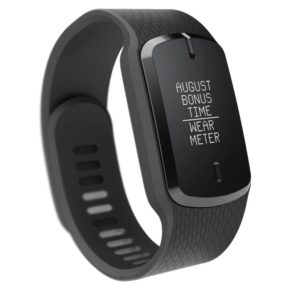
Hot Topics
You Wear It Well
August 12, 2021
 The recent announcement by Nielsen that the company will deploy wearable technology for PPM data collection is a welcome bit of good news. The original PPM technology has been around for decades and has clearly been lapped by not only the advancement of digital tech but by the habits of the users.
The recent announcement by Nielsen that the company will deploy wearable technology for PPM data collection is a welcome bit of good news. The original PPM technology has been around for decades and has clearly been lapped by not only the advancement of digital tech but by the habits of the users.
It would be easy to say “well it’s about time,” but that would be an overly cynical take. We applaud Nielsen for proceeding with caution as they roll out these new versions of the meter.
As such, we are also impatient. At the time of this writing we know that there will be a total of 3,000 new wearables in the field this fall, 1,000 of which will be new panelists. We also know we won’t know how this new system impacts ratings until the second quarter of 2022.
This gives us plenty of time for speculation and to ask a bunch of questions. And we have answers from a Nielsen spokesperson.
Q: We hear that this new system has had a positive effect on compliance. It has also increased carry time. Since this improves compliance in certain demos more than others, does listening to certain formats favored by those demographics benefit some more than others? If so, which ones?
A: Compliance boosts may improve representation and reduce weighting in given demos. However, less weighting does not mean the estimates will change in favor of one format or another. The reason Nielsen is placing a subset of wearables into the panel is to see what compliance and audience estimates look like in the active panel setting. While Nielsen can’t get to station level detail, they should be able to get a read for broad format categories nationally. They expect findings in Q2 2022.
Q: Do the wearables affect PUMMs in some demos more than others, and if so which ones?
A: The wearables are not likely to impact PUMMs but we’ll get a read on this when the results of the subset of panel are available Q2 2022.
Q: Is this change mainly being done because of Nielsen ONE and TV, or would it have happened regardless of that initiative?
A: While the next-gen PPM wearable has been in process for a number of years, it will also be foundational for Nielsen ONE, which is a cross-media solution that will deliver a single, deduplicated metric for total media consumption across TV, digital, and audio.
Q: Is there a plan to provide TV viewing data to Nielsen radio clients and vice versa?
A: Not currently.
Q: If the panel will be used for TV and radio measurement, will this allow for increased sample sizes at similar cost for Nielsen clients?
A: This remains to be seen. It’s too early to answer at this early stage.
Q: Will the companion app allow for monitoring of streaming listening or other digital media consumption over the phone? If so, does it help overcome the current limitation relating to measurement of listening with wireless headphones?
A: The companion app may be able to provide information about app usage from consenting panelists in the future. However, it will not do so when launched. It does not currently measure what is happening on the smartphone. There is no headphone adaptor with the new wearable and for that reason we will continue to use the headphone adjustment until we can incorporate big data on streaming and podcasting.
Q: The current headphone adjustment is intended to compensate for wireless headphone usage and maybe some panelists who weren’t using the headphone adaptor. Will the adjustment factor be modified/increased now that 0% of headphone (wired or wireless) will be captured by the wearable meter and if so, when?
A: Nielsen is updating the survey data this year that underpins the headphone adjustment. New adjustment factors should be in place early next year.
Nielsen will reveal more in a client webinar on August 16th. This is certainly a step in the right direction and, hopefully, will be a boon for radio.
-Steve Allan, Programming Research Consultant
Comments